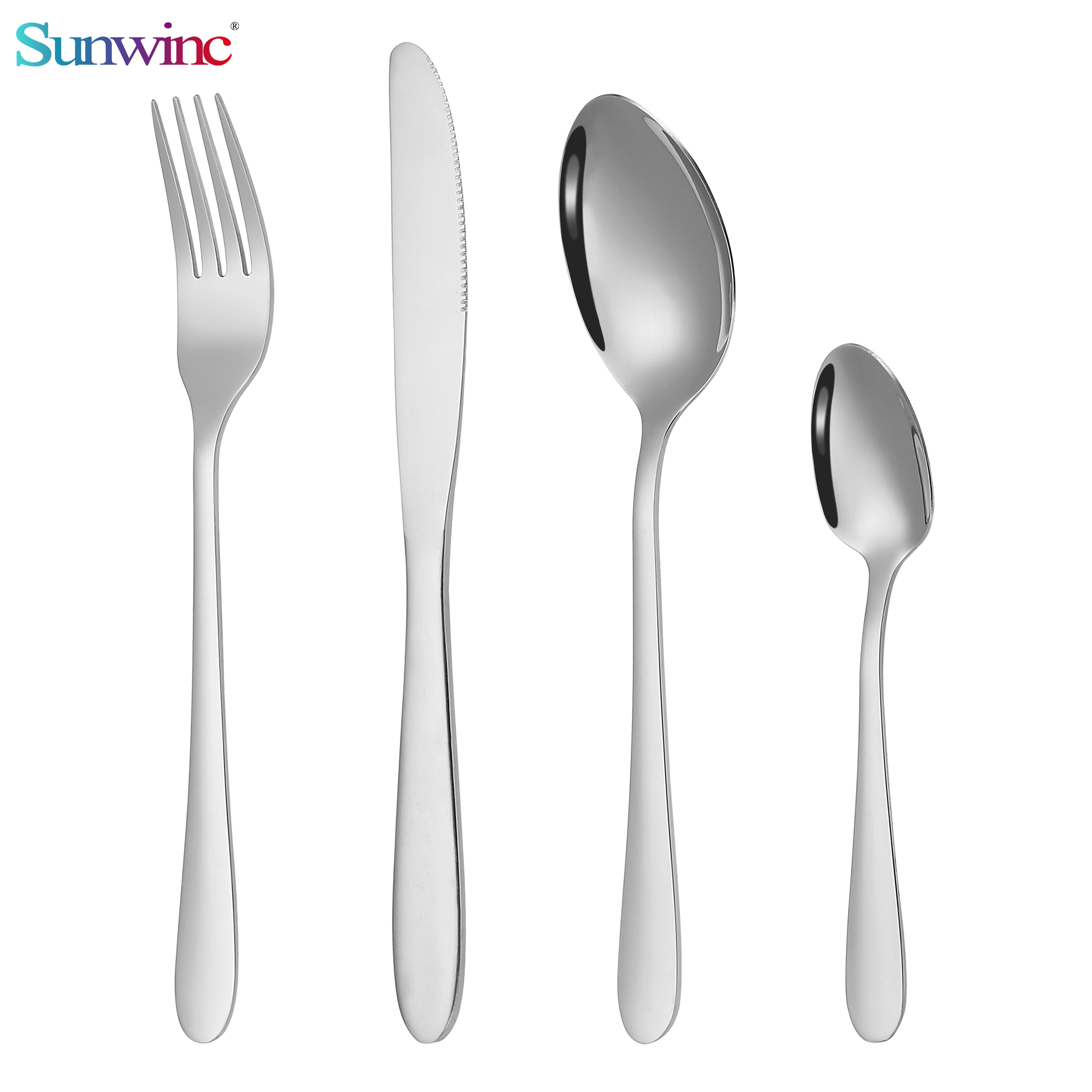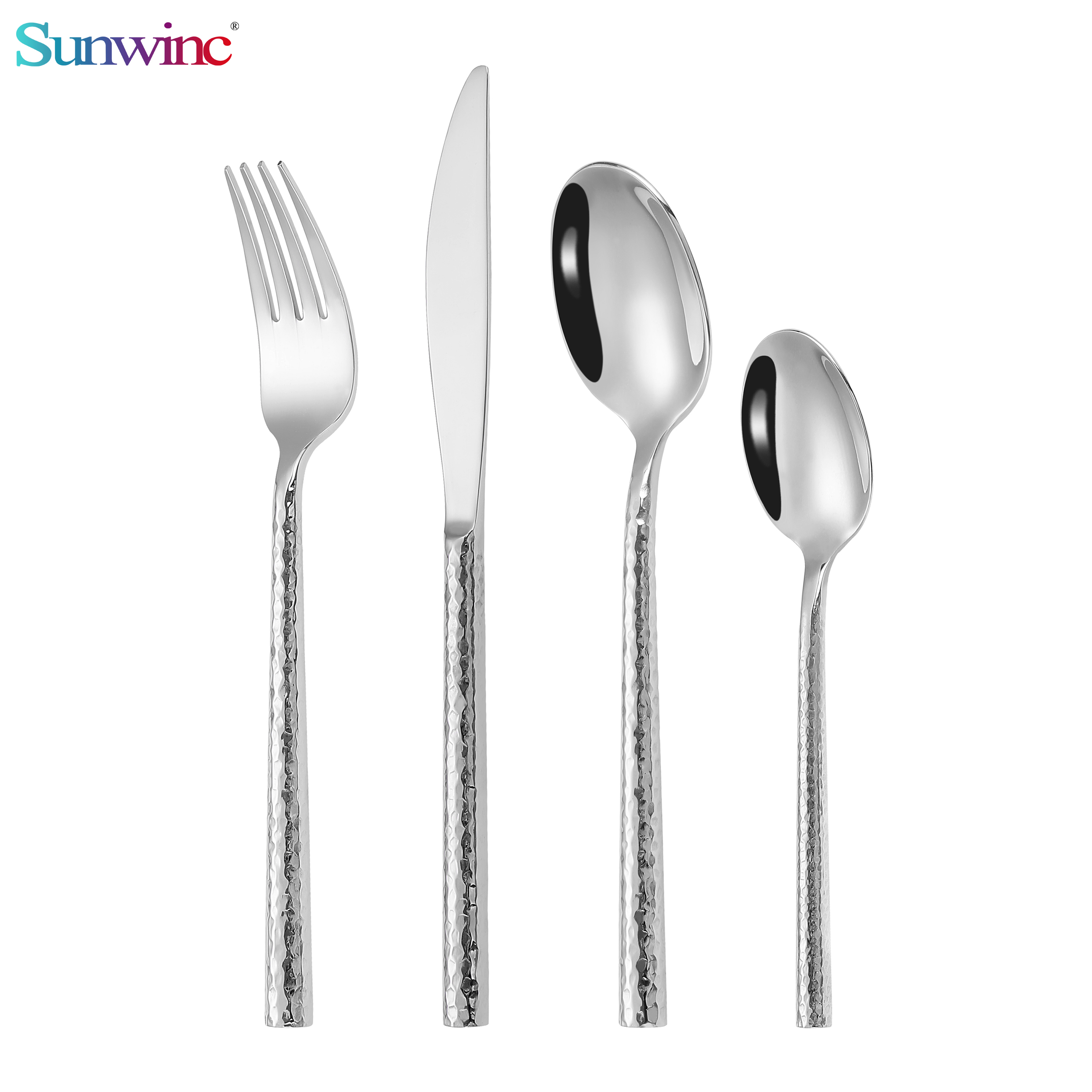Abstract
Among the obvious advantages of using gold cutlery are its ability to add grace to any dining affair and its composition as a completely non-toxic and safe metal. Should microscopic amounts of gold scrape off during prolonged use, the risks of contamination are minimal. Yet, understanding the nuances of gold flatware’s safety is crucial for anyone looking to elevate their dining experience. This article will delve into the safety of gold flatware, its benefits, potential concerns, and essential maintenance tips to ensure its longevity and beauty.
Introduction
Gold flatware has been a symbol of elegance and luxury for centuries, often seen at high-profile events, lavish dinner parties, and even in royal households. The allure of gold cutlery lies not just in its radiant appearance but also in the sense of sophistication it brings to any dining table. However, with its popularity comes the essential question: Is gold flatware safe? This blog aims to answer that question by discussing gold’s properties, addressing any safety concerns, and providing useful tips for caring for your gold flatware.
In recent years, more diners have turned to gold flatware, attracted not only by its beauty but also by its impressive safety profile. Understanding how gold interacts with food, its benefits over other materials, and how to maintain this luxurious dining accessory is key to a worthwhile investment.

Understanding Gold as a Material
To understand whether gold flatware is safe, we must first examine gold itself. Gold is a noble metal, which means it is chemically stable and non-reactive. These characteristics make gold very different from metals that can react with food and change its flavor or composition.
Non-Toxic Properties
One of the most significant advantages of gold is that it is entirely non-toxic. Research indicates that even if microscopic amounts of gold were to scrape off during use (which is extremely rare), they would not pose any health risks. In fact, gold is commonly used in various medical applications due to its biocompatibility, making it safe for use in the human body.
Gold in Medicine
Gold’s non-toxic nature has led to its use in dentistry, medical implants, and treatments in rheumatology. This biocompatibility demonstrates that gold poses no toxicity concerns when consumed in very small quantities, reinforcing its position as a safe choice for utensils, including flatware.

The Benefits of Gold Flatware
As we explore the safety of gold flatware, it is also imperative to recognize the many advantages that come with choosing gold as a dining option.
1. Aesthetics and Elegance
Gold flatware imparts a sense of decorum and sophistication that is unmatched by other materials. It can transform an ordinary meal into a remarkable experience, whether it’s a holiday feast or a romantic dinner.
2. Non-Reactive Qualities
Due to gold’s inertness, it does not react with acidic foods, spices, or beverages. This property preserves the original flavor of a meal without interfering with the taste or quality of food, unlike some metals that might impart a metallic flavor.
3. Resistance to Corrosion
Unlike silver, which tarnishes and requires polishing, gold does not corrode or tarnish. This resistance to degradation allows gold flatware to maintain its shine far longer, reducing maintenance effort.
4. Durability
Gold, particularly when alloyed with other metals, can be incredibly durable. Solid gold flatware can withstand significant wear and tear, while high-quality gold-plated flatware, depending on the thickness of the plating, can also sustain regular use with proper care.
5. Investment Value
Investing in gold flatware can yield value over time, as solid gold items often appreciate in value. This makes it not just a culinary tool, but also a financial asset.
6. Cultural Significance
In many cultures, gold flatware represents wealth and hospitality. It adds a traditional touch to gatherings and celebrations, making it a popular choice for weddings, anniversaries and festivities.
Potential Concerns About Gold Flatware
While gold flatware offers numerous benefits, potential concerns should also be addressed. Understanding these issues is crucial to making an informed decision about using gold cutlery.
1. Gold-Plated vs. Solid Gold
One of the primary considerations is whether to choose solid gold flatware or gold-plated options. Here’s a breakdown of both:
-
Gold-Plated Flatware: This type typically consists of a base metal, such as stainless steel, coated with a thin layer of gold. While attractive and more affordable, the quality of the gold plating can vary. Thinner plating may wear off over time, exposing the base metal. If the base metal is not of high quality, it could potentially react with food, leading to safety concerns.
-
Solid Gold Flatware: Solid gold is inherently more durable and less likely to wear away. It is less susceptible to scratching and tarnishing, making it a longer-lasting investment. However, solid gold flatware tends to be much more expensive.
2. Wear and Tear
Regardless of the type of gold flatware, it is essential to consider that wear and tear can occur over time. Frequent use may lead to scratches and dulling of the surface. While minor scratches might not affect the safety of the cutlery, they may detract from the visual appeal.
3. Cleaning and Maintenance
Proper cleaning methods are vital to maintaining the safety and appearance of gold flatware. Many people mistakenly believe they can throw their gold cutlery into the dishwasher. However, this approach can be problematic for several reasons:
-
Dishwasher Detergents: Many dishwasher detergents are harsh and abrasive. They can wear away the gold plating and lead to tarnishing or discoloration of the surface.
-
Heat in Dishwashers: The extreme heat generated during the dishwasher cycle can weaken the gold plating and lead to damage over time.
4. Storage Concerns
Gold flatware must be stored with care to prevent scratches and contact with other utensil types that may cause wear. Not taking the time to store flatware correctly can lead to unintentional damage.

Caring for Gold Flatware
Proper care can ensure that gold flatware lasts for many years while retaining its beauty. Here are essential tips for maintaining gold flatware:
1. Hand Washing
Always hand wash gold flatware with mild soap and warm water. Avoid placing it in the dishwasher to prevent exposure to harsh detergents and high temperatures.
2. Use Soft Materials
When cleaning, use soft sponges or cloths. Avoid abrasive scrubbing pads, steel wool, or harsh cleaning agents to prevent scratches and damage to the gold finish.
3. Rinse Thoroughly
Make sure to rinse all soap residue thoroughly after washing to avoid any potential chemical reactions that could lead to tarnishing.
4. Dry Immediately
After rinsing, dry each piece promptly with a soft, lint-free cloth. This prevents water spots and helps maintain the shine of the gold flatware.
5. Periodic Polishing
Consider using a gentle polish designed specifically for gold on your flatware. This polishing should be done periodically to maintain the finish and remove any tarnish that may develop over time.
6. Proper Storage
Store your gold flatware in a cool, dry space away from direct sunlight. Using a fabric-lined storage case or drawer can protect against scratches and tarnishing. Avoid stacking pieces directly on top of one another to minimize the risk of contact damage.
Comparing Gold Flatware to Other Materials
To further understand the value of gold flatware, it helps to compare it to other common materials used in flatware.
1. Gold vs. Stainless Steel
-
Safety: Both materials are generally safe for food contact, but stainless steel can contain nickel, which can be a concern for allergy sufferers. Gold, on the other hand, is hypoallergenic.
-
Durability: Stainless steel is hardy and resistant to rust and corrosion; however, it may not offer the same luxurious appeal as gold. Gold flatware may be more susceptible to scratches, particularly if it is gold-plated, but can avoid tarnish over time.
-
Weight: Gold flatware is often lighter than stainless steel, which some people may find more comfortable for dining.
2. Gold vs. Silver
-
Tarnishing: Silver flatware is prone to tarnishing and requires regular polishing to maintain its appearance. In contrast, gold does not tarnish, meaning less maintenance is necessary.
-
Antimicrobial Properties: Silver has natural antimicrobial properties, which can be beneficial in some contexts. Gold does not offer these properties but is still completely inert and safe.
-
Cost and Value: Investing in gold flatware is generally more expensive, but its value can appreciate over time, making it a worthwhile investment.
The Usability of Gold Flatware
When considering whether gold flatware is safe, usability is an important factor.
1. Versatility
Gold flatware is versatile enough for various dining occasions, from casual weekday dinners to formal holiday feasts. Its ability to pair well with different table settings makes it ideal for those who enjoy hosting.
2. Enhanced Dining Experience
Using gold flatware can enhance the dining experience by making meals feel more special. The aesthetic appeal of gold contributes to a luxurious atmosphere, encouraging guests to savor each bite and engage in conversation.
3. Enjoyment of Culinary Arts
With its non-reactive properties, gold flatware allows home cooks and chefs to explore new flavors and culinary techniques without concern. There’s comfort in knowing that your flatware won’t alter the food’s flavor.
Conclusion
In summary, gold flatware is not only safe to use but also offers unmatched aesthetic and practical benefits. Its non-toxic nature and resistance to corrosion make it a reliable choice for those who appreciate quality in their dining experiences. While proper care and maintenance are vital, the risks associated with using gold flatware are minimal, especially when compared to the advantages it presents.
Investing in gold flatware allows you to infuse a touch of elegance into every meal while ensuring safety and functionality. By taking the time to care for and respect these beautiful pieces, you can enjoy their splendor for generations to come. Gold flatware is more than just a dining utensil; it is a symbol of tradition, beauty, and culinary enjoyment.









